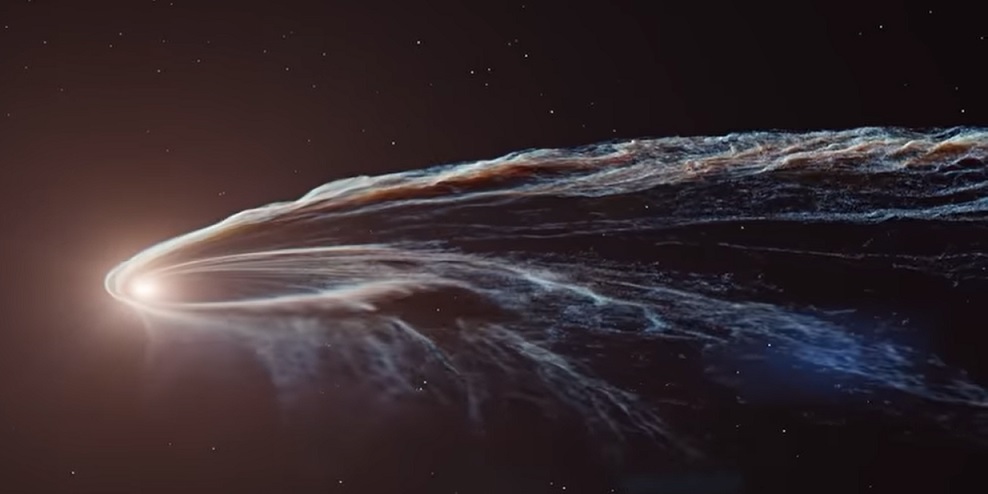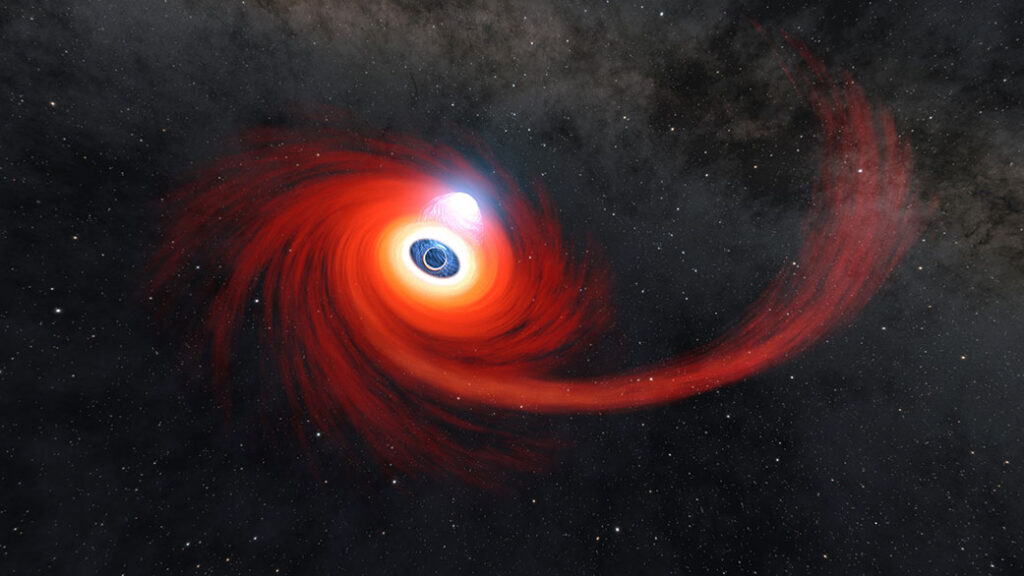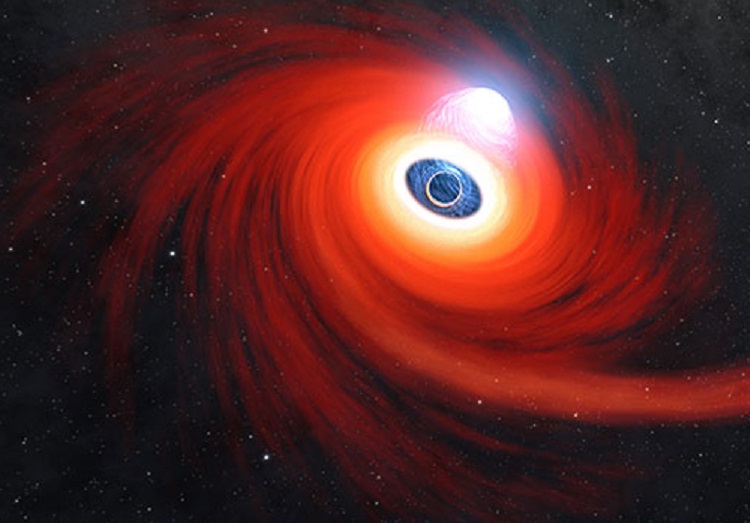Recent observations of a black hole devouring a wandering star may help scientists understand more complex black hole feeding behaviors, reported NAS
Recent observations of a black hole devouring a wandering star may help scientists understand more complex black hole feeding behaviors, reported NASA.
Multiple NASA telescopes recently observed a massive black hole tearing apart an unlucky star that wandered too close. Located about 250 million light-years from Earth in the center of another galaxy, it was the fifth-closest example of a black hole destroying a star ever observed.

Once the star had been thoroughly ruptured by the black hole’s gravity, astronomers saw a dramatic rise in high-energy X-ray light around the black hole. This indicated that as the stellar material was pulled toward its doom, it formed an extremely hot structure above the black hole called a corona.
NASA’s NuSTAR (Nuclear Spectroscopic Telescopic Array) satellite is the most sensitive space telescope capable of observing these wavelengths of light, and the event’s proximity provided an unprecedented view of the corona’s formation and evolution, according to a new study published in the Astrophysical Journal.

The work demonstrates how the destruction of a star by a black hole –a process formally known as a tidal disruption event– could be used to better understand what happens to material that’s captured by one of these behemoths before it’s fully devoured.
“Tidal disruption events are a sort of cosmic laboratory,” said study co-author Suvi Gezari, an astronomer at the Space Telescope Science Institute in Baltimore. “They’re our window into the real-time feeding of a massive black hole lurking in the center of a galaxy.”

The event was first spotted on March 1, 2021, then, around 300 days after the event was first spotted, NASA’s NuSTAR began observing the system. Scientists were surprised when NuSTAR detected a corona –a cloud of hot plasma, or gas atoms with their electrons stripped away– since coronae usually appear with jets of gas that flow in opposite directions from a black hole.
However, with the AT2021ehb tidal event, there were no jets, which made the corona observation unexpected. Coronae emit higher-energy X-rays than any other part of a black hole, but scientists don’t know where the plasma comes from or exactly how it gets so hot.

Credits: NASA/JPL-Caltech
Yuhan Yao, a graduate student at Caltech in Pasadena, California, and lead author of the new study is leading an effort to look for more tidal disruption events identified by ZTF and to then observe them with telescopes like Swift, NICER, and NuSTAR. Each new observation offers the potential for new insights or opportunities to confirm what has been observed in AT2021ehb and other tidal disruption events. “We want to find as many as we can,” Yao said.
For more information about the NuSTAR mission, visit:
Watch video:
All Credit To: NASA


